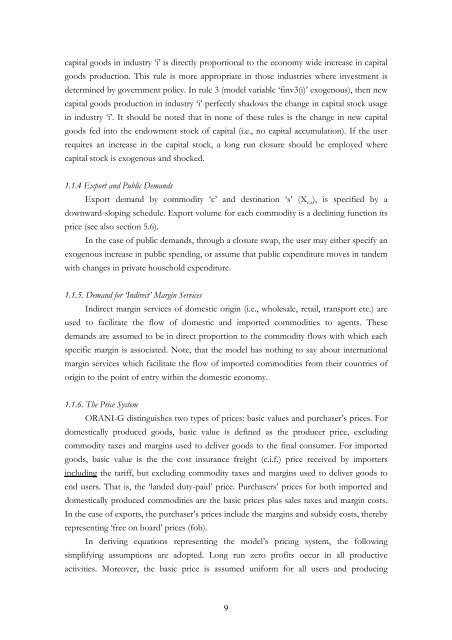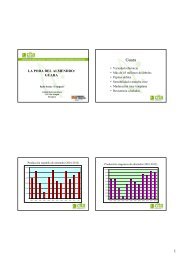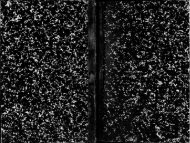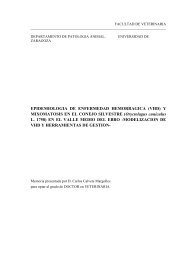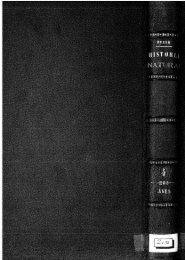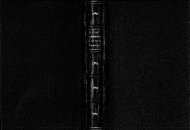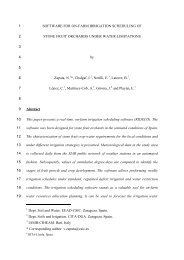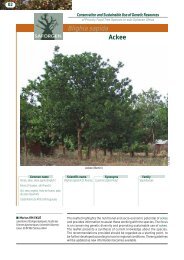1 A Recursive Dynamic Computable General Equilibrium Model For ...
1 A Recursive Dynamic Computable General Equilibrium Model For ...
1 A Recursive Dynamic Computable General Equilibrium Model For ...
Create successful ePaper yourself
Turn your PDF publications into a flip-book with our unique Google optimized e-Paper software.
capital goods in industry ‘i’ is directly proportional to the economy wide increase in capital<br />
goods production. This rule is more appropriate in those industries where investment is<br />
determined by government policy. In rule 3 (model variable ‘finv3(i)’ exogenous), then new<br />
capital goods production in industry ‘i’ perfectly shadows the change in capital stock usage<br />
in industry ‘i’. It should be noted that in none of these rules is the change in new capital<br />
goods fed into the endowment stock of capital (i.e., no capital accumulation). If the user<br />
requires an increase in the capital stock, a long run closure should be employed where<br />
capital stock is exogenous and shocked.<br />
1.1.4 Export and Public Demands<br />
Export demand by commodity ‘c’ and destination ‘s’ (Xc,s), is specified by a<br />
downward-sloping schedule. Export volume for each commodity is a declining function its<br />
price (see also section 5.6).<br />
In the case of public demands, through a closure swap, the user may either specify an<br />
exogenous increase in public spending, or assume that public expenditure moves in tandem<br />
with changes in private household expenditure.<br />
1.1.5. Demand for ‘Indirect’ Margin Services<br />
Indirect margin services of domestic origin (i.e., wholesale, retail, transport etc.) are<br />
used to facilitate the flow of domestic and imported commodities to agents. These<br />
demands are assumed to be in direct proportion to the commodity flows with which each<br />
specific margin is associated. Note, that the model has nothing to say about international<br />
margin services which facilitate the flow of imported commodities from their countries of<br />
origin to the point of entry within the domestic economy.<br />
1.1.6. The Price System<br />
ORANI-G distinguishes two types of prices: basic values and purchaser’s prices. <strong>For</strong><br />
domestically produced goods, basic value is defined as the producer price, excluding<br />
commodity taxes and margins used to deliver goods to the final consumer. <strong>For</strong> imported<br />
goods, basic value is the the cost insurance freight (c.i.f.) price received by importers<br />
including the tariff, but excluding commodity taxes and margins used to deliver goods to<br />
end users. That is, the ‘landed duty-paid’ price. Purchasers’ prices for both imported and<br />
domestically produced commodities are the basic prices plus sales taxes and margin costs.<br />
In the case of exports, the purchaser’s prices include the margins and subsidy costs, thereby<br />
representing ‘free on board’ prices (fob).<br />
In deriving equations representing the model’s pricing system, the following<br />
simplifying assumptions are adopted. Long run zero profits occur in all productive<br />
activities. Moreover, the basic price is assumed uniform for all users and producing<br />
9


